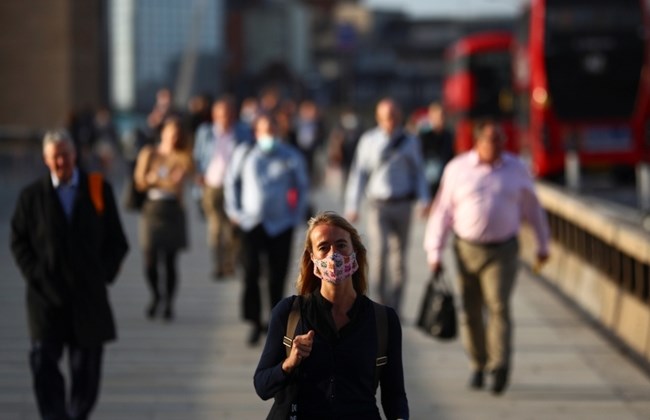LONDON (Reuters) – Britain’s jobless rate unexpectedly fell in the three months to January, a change that partly reflected people giving up their job hunt as lockdown measures tightened at the start of the year, official figures showed on Tuesday.
The main jobless rate dropped to 5.0% in the three months to January from 5.1% in the final quarter of 2020, in contrast to forecasts in a Reuters poll for a small rise to 5.2%. None of the economists polled had expected a fall.
“The latest labour market data are somewhat mixed but show considerable resilience overall,” said Howard Archer, chief UK economist at consultants EY ITEM Club.
Part of the drop in the headline unemployment rate was due to high jobless numbers for October alone dropping out of the three-monthly figures.
The drop also reflected an increase in the proportion of the potential workforce classed as ‘inactive’, such as students, parents looking after their children full time and people who have temporarily given up looking for work.
This ‘inactivity rate’ rose by 0.3 percentage points over the past three months to 21.0%, its highest since early 2019, while the share of people in employment fell by 0.3 percentage points over the same period, equivalent to a drop of 147,000.
Since January non-essential shops and most businesses open to the public have been closed in England to slow a surge in more infectious variants of COVID, with similar measures in other parts of the United Kingdom.
Last month the government extended furlough support – which currently pays the wages of one in five employees – until the end of September. Without furlough, Britain’s jobless rate would be far higher.

A rapid roll-out of vaccinations has sharply reduced new infections and allowed English pupils to return to school this month. Shops are due to reopen next month, but restrictions on hospitality will remain until at least late June.
Separate official data based on tax records – which some analysts view as more reliable than the main labour force survey – showed the number of employees on company payrolls in February had fallen by 693,000 over the past year.
Almost two thirds of this decline affected workers aged under 25, a majority of the job losses were in hospitality and a third of the total took place in London, the ONS said.
But there has been an upturn more recently with an increase of 68,000 between January and February in the number of workers.
This data also pointed towards a fall of 178,000 in the number of non-UK nationals employed by British companies in the final quarter of 2020 compared with a year earlier.
Previous ONS data from the main labour force survey had pointed towards a fall of around 800,000 or more, although the ONS had said it needed to be interpreted cautiously.
“LFS estimates alone may be significantly overstating the fall in the number of non-UK nationals,” the ONS said.
SOURCE: REUTERS





